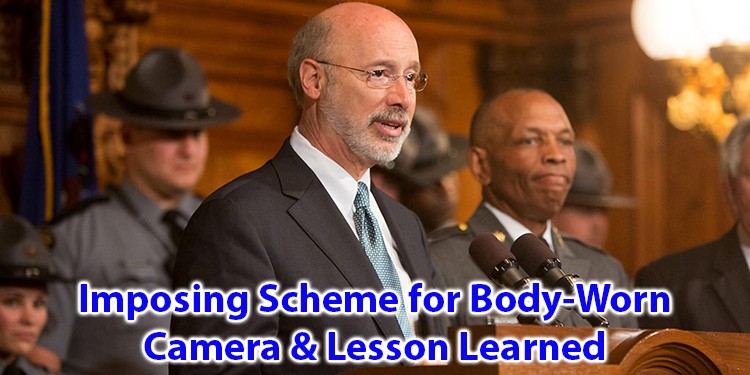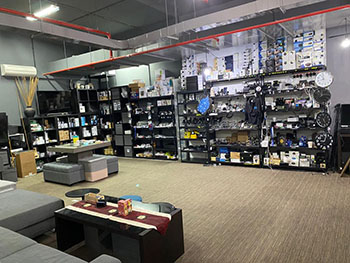Imposing Scheme for Body Worn Camera and Lesson Learned
Introduction:
Body-worn video (BWV), otherwise called body cameras and body-worn cameras, or wearable cameras is a wearable sound, video, or photographic chronicle framework. In contrast to numerous different types of police innovation, body-worn cameras can serve both a law implementation and open responsibility work. Body cameras worn by police can be helpful for reporting police unfortunate behavior and utilization of power, yet film can likewise be utilized to surveil the two individuals that police associate with and outsiders who probably won’t understand they are being shot.
The world is advancing progressively. Tech has become the armor of nations. The latest technology is being invented every-day. Modern researches and publications are happening around the globe as you are reading this right now. New modern widgets are being introduced in every field of life which are making life easy for us. The same is the case with Body-worn camera (BWC) technology. These widgets are installed on a law enforcement agent’s body. They are used to record the encounters that are experienced by officers on a daily basis as well as a live feed of a grave mission. Now how can these cameras be implemented, what are our recommendations in this regard and what are the lessons we have learned so far through our experience. All the topics are covered in this comprehensive article. Have a glance, and fill your thirst for a quest.
Implementing a body-worn camera
New innovations in policing raise various policy issues that must be considered. This is particularly valid with body-worn cameras, which can have huge ramifications as far as security, network connections, and interior departmental undertakings. As agencies develop body-worn camera programs, it is crucial that they thoughtfully examine how their policies and practices intersect with these larger questions. Policy issues to look at including the effect these cameras have on privacy and community relationships, the concerns raised by frontline officers, the expectations that cameras create in terms of court proceedings and officer credibility, and the financial considerations that cameras present.
Concerns:
The heightening of camera phones progresses in surveillance innovation, and the development of online networking has changed the manner in which individuals see security, adding to the feeling that, as Police Commissioner Charles Ramsey of Philadelphia stated, it now and again feels just as “everybody is taping everyone.” As innovation advances and desires for protection advance, it is important that law implementation organizations cautiously think about how the technology they use influences the public’s security rights, particularly when courts have not yet given direction on these issues.
Body-worn cameras raise numerous security issues that have not been considered previously. In contrast to numerous customary surveillance strategies, body-worn cameras can record both sound and video, furthermore, catch close-up pictures that take into account the potential utilization of facial recognition innovation. Moreover, while stationary surveillance cameras generally cover just public spaces, body-worn cameras give officials the capacity to record inside private homes and to film touchy circumstances that may develop during calls for service.
What should be the criteria to use body-worn cams?
There is likewise concern about how the recording from body-worn cameras may be put away and utilized. For instance, will an individual have the option to acquire a video that was recorded inside a neighbor’s home? Will organizations keep recordings uncertainly? Is it conceivable that the body-worn camera film may be inappropriately posted on the web? When executing body-worn cameras, law requirement offices must offset these protection contemplations with the requirement for the straightforwardness of police activities, exact documentation of occasions, and proof gathering. This implies settling on cautious choices about when officials will be required to activate cameras, to what extent recorded information ought to be held, who approaches the recording, who possesses the recorded information, and how to deal with interior and outside solicitations for disclosure.
Consent to record
In a bunch of states, officials are legitimately required to illuminate subjects when they are recording and to acquire the individual’s consent to record. This is known as a “two-party consent” law, and it can create challenges to actualizing a body-worn camera program. In numerous two-party consent states, be that as it may, police officials have effectively worked with their state lawmaking bodies to have the consent necessity postponed for body-worn police cameras. For instance, in February 2014 Pennsylvania authorized a law forgoing the two-party assent prerequisite for police utilizing body-worn cameras.
Endeavors are in progress to change two-party consent rules in different wards too. Every office must inquire about its state laws to decide if the two-party consent necessity applies.
Some police officials accept that it is great practice for officials to advise individuals when they are recording, regardless of whether such revelations are definitely not legally necessary. In Greensboro, for instance, officials are supported— be that as it may, not required—to report when they are recording. Boss Miller of Greensboro said this arrangement depends on the conviction that the information that cameras are running can help defuse conceivably angry circumstances and improve conduct from all gatherings.
These few things should be kept in mind if you are implementing a body-worn camera in the workplace or when a government implements this tech in police or other armed forces. Now, let’s have a look at some of the recommendations we’ve prepared for you if you are trying to implement body-worn cameras.
Recommendations for deploying body-worn cameras
Here are some of the recommendations we think should be shared with you, if you are thinking to deploy body-worn cameras in your workplace.
- Policies should be 100% clear which staff is appointed or allowed to wear body-worn cameras and under which conditions.
- Should it be on chest, head, sunglasses, shoulder, collar or on the shooting side of the gun?
- Officials who activate the body-worn camera while on duty ought to be required to take note of the presence of the recording in the official incident report.
- Officials ought to be required to advise subjects when they are being recorded except if doing as such would be dangerous, unreasonable, or impossible.
- On the off chance that an organization appoints cameras to officials on a willful premise, policies ought to stipulate any explicit conditions under which an official may be required to wear one.
- Officials who wear body-worn cameras should be required to express on camera or in composing their reason in the event that they neglect to record a movement that is required by office policy to be recorded.
- Data should be downloaded from the body-worn camera by the end of each shift in which the camera was used.
- As a general recording policy, officials ought to be required to enact their body-worn cameras when reacting to all calls for services and during all law, requirement related experiences and exercises that happen while the official is on duty.
- Organizations ought not to allow faculty to utilize exclusive body-worn cameras while on duty.
- Policies should clarify the location on the body where these cams are needed to be planted.
- Strict policies should be maintained for data tampering, deleting, and copying of the footage.
- Officers should properly classify and tag body-worn camera videos at the time they are downloaded. The captured videos should be put in a directory according to the type of happening. Either it was a robbery, murder, or an assault case?
- A clear policy should be defined explaining where the recording should be held.
- Officers should be allowed to view the recorded footage before putting that officer in front of the camera, he should have a chance to review the footage recorded from his body cam.
- Policies should define when a supervisor can view his inferior officer’s body cam’s footage.
Lessons learned
Based on our experience, we have learned some lessons on observing the agencies who are deploying or has deployed body-worn cams in their fields. It is seen that the agencies deploy body cams on those personals who have the most time spent with the public, who has the most experience with the people.
A few offices report that checking on and labeling recorded information can be a tedious procedure that is inclined to human blunder. One organization tended to this issue by working with the camera producer to build up a computerized procedure that connections the recorded information to the office’s records the board framework. Some camera frameworks can likewise be connected to electronic tablets that officials can use to audit and label recorded information while still in the field.
Police administrators and investigators report that they have had no issues to date with utilizing an outsider seller to oversee recorded information on an online cloud, as long as the chain of custody can be appropriately settled.
Conclusion:
Police offices ought to adopt a steady way to deal with implementing a body-worn camera program. This implies testing the cameras in experimental runs projects and drawing in officials and the public during practice trials. It additionally implies cautiously making body-worn cameras approach the level of liability, straightforwardness, and privacy rights while saving the significant relationship that exists between officials and individuals from the community.









